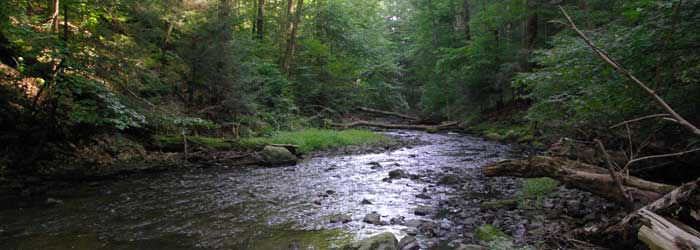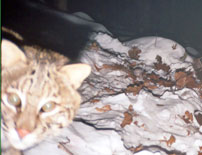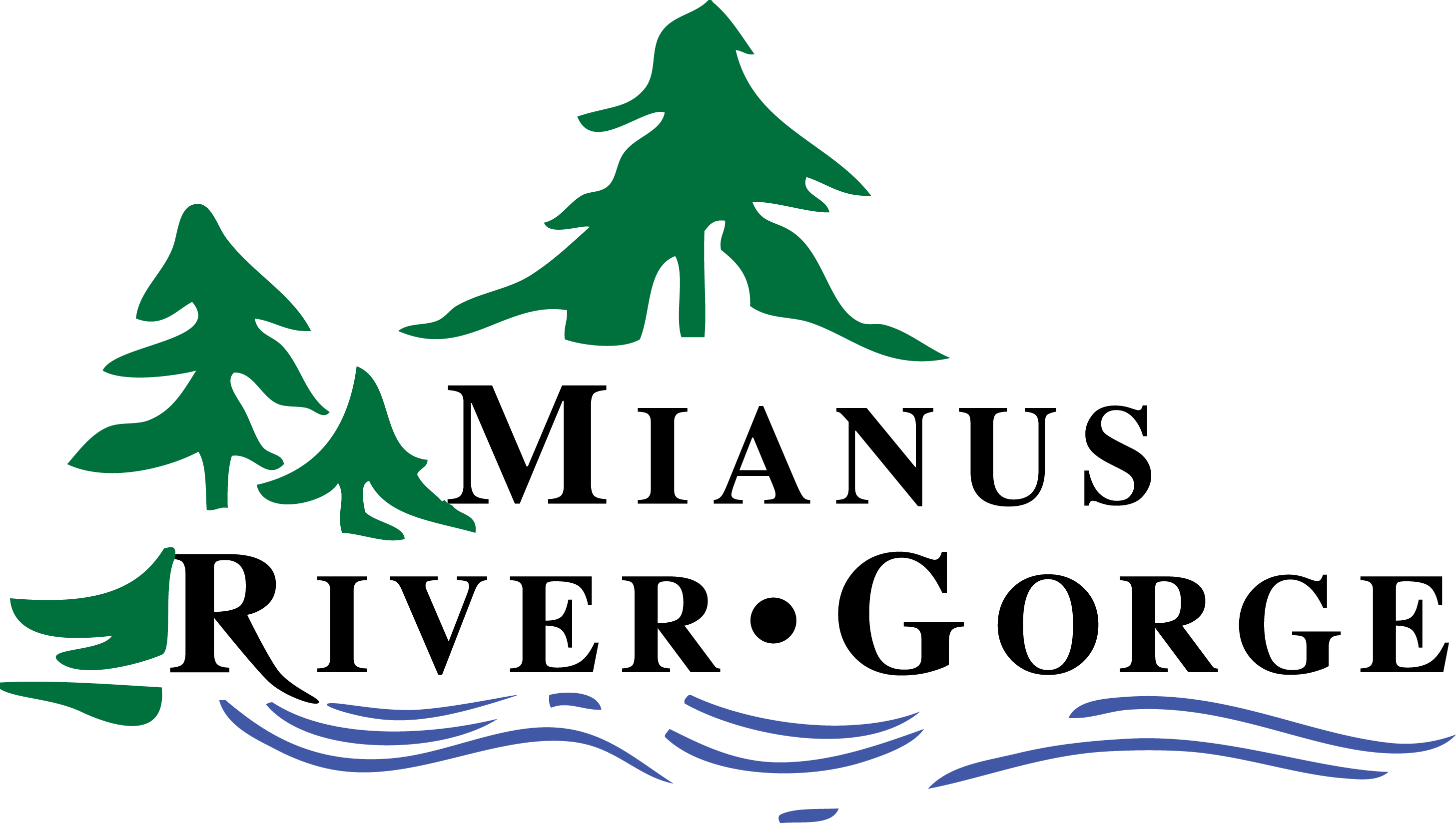
Geologists believe that tens of thousands of years ago, the Mianus River flowed from Banksville northward to the Stonehill River System in northern Bedford. South of the present day Gorge was another watershed flowing southward to Long Island Sound. The advancing Wisconsin glacier blocked the Mianus from flowing Northward and, as the glacier melted, it formed a large lake at the site of the present Bedford Village.
When the dam for this lake broke, this tremendous flow of water started the formation of the Gorge, which continues to this day. The Mianus River continues to flow northward from Banksville, but now, as a result of this glacial activity, turns southward in Bedford and flows to Long Island Sound in Cos Cob. Enriched with a virgin stand of giant hemlocks, the Gorge has remained virtually untouched by man since it was carved out of our native granite thousands of years ago.
The First Inhabitants
The Mianus River gets its name from the Wappinger Condederacy chief Myanos, who was killed near the Gorge in 1683. Chief Myanos’s tribe controlled the area from the NY-CT border south to Cos Cob and the Long Island Sound. Chief Katonah laid claim to lands in the northern watershed around what is now Bedford village.

White settlers came to the Valley of the Mianus in the 1600’s carrying diseases that decimated Native American populations. In less than a decade, Sachem Myanos and the Mahican tribe were forced off their land by colonial farmers. Today there is no mark on the landscape but their leader’s name.
The Changing Landscape
In the 1700 and 1800’s, much of the land around the Gorge was cleared for pastures, marked at the edges by walls made from the stones removed from the rocky soil. The steep slopes in the Gorge were not good for pastureland and this old-growth forest was saved. The majority of the old-growth in the Gorge was hemlock, which was not good for lumber. The early settlers used only the bark of hemlocks, from which they extracted tannin used to tan animal pelts.

After the Civil War, many of the local farmers abandoned their land for good farmland in the west. Pastures were allowed to revert back to forest. The second growth forest that grew here was generally even-aged and therefore less diverse than the old-growth forest of the steep gorge. This second-growth younger forest you see in the Gorge today (mostly on the blue trail) is between 50 and 100 years old.
Over the last past few decades, the Gorge has faced new changes, primarily from encroaching suburban development. Unlike the past few centuries where forest became field and visa versa, today, forest and field become parking lots and human habitation. Hydrology has radically changed while exotic plant and animal species become established, a result of our cosmopolitan society. It is in this period of change that the impetus to protect the Gorge emerged.
Ecology
The Mianus River Gorge Preserve contains a vast array of wildlife, plants, and fungi. We’ve done our best to catalog these species, and have come up with some pretty great pictures over the years. The two large mammalian predators found in the Preserve are coyotes and bobcat. Coyotes are more common, and while they typically prey on small game such as squirrels, mice, and other rodents (as well as eating certain plant material), they often take deer fawns in the spring and possibly adult deer from time to time. Much of our current research is addressing the impact and limiting the power of coyotes on the white-tailed deer, which are extremely over-abundant in our area and severely limit forest regeneration.

Bobcats are very rare in our area, and it is unknown how many are in the Preserve. It is likely the Preserve is just a part of one or a few individuals’ territories. These are the first pictures of this species in the Gorge ever, taken in the winter of 2004-05.
The gorge is home to many types of reptiles and amphibians, known collectively as herpetofauna. Amphibian abundance and diversity is typically a general indicator of the health of an ecosystem, since they are very sensitive to water quality and pollution. The Preserve has a large number of amphibian species due to the array of vernal pools found here. Vernal pools provide standing pools of water in the spring and summer that provide shelter and breeding sites for amphibians such as frogs and salamanders (and many species of invertebrates).
